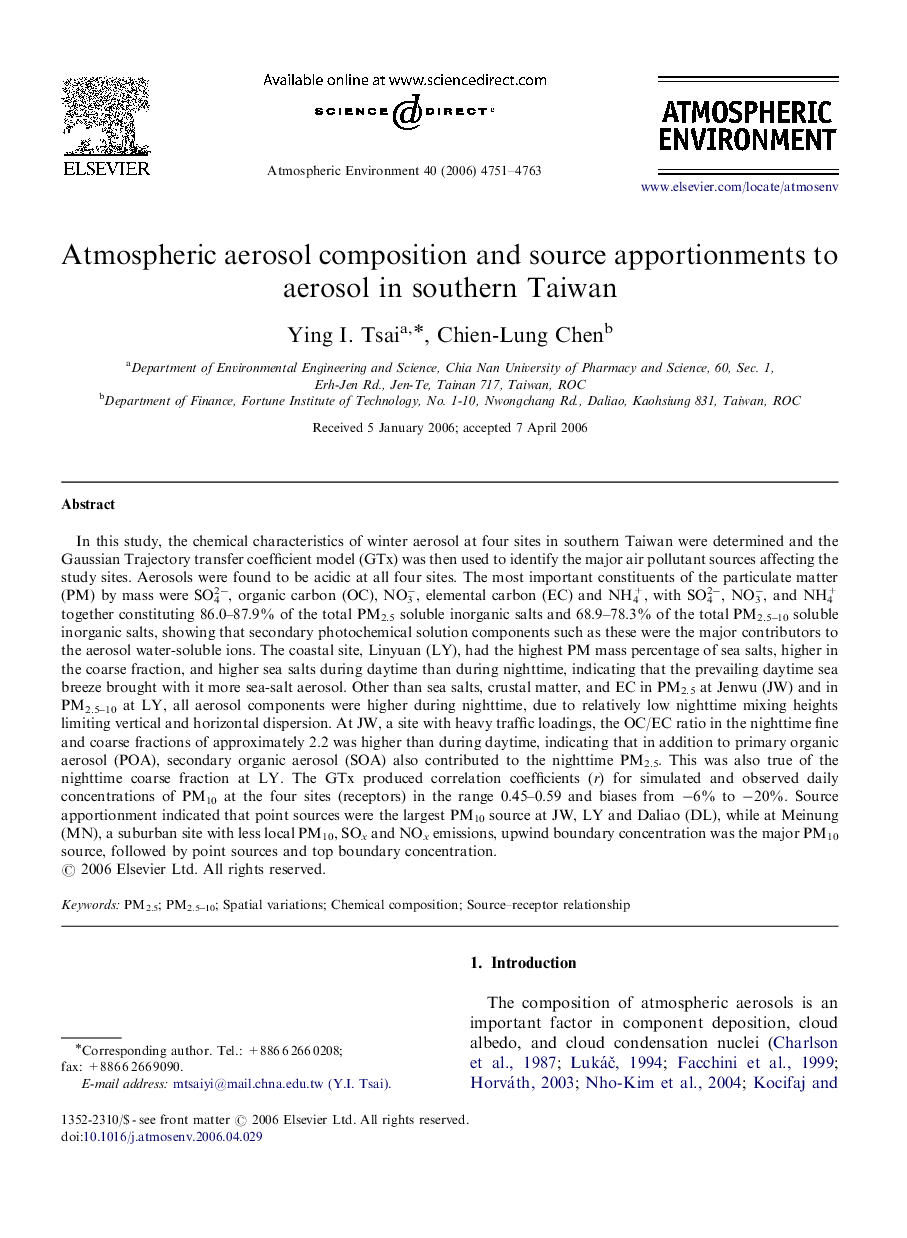| Article ID | Journal | Published Year | Pages | File Type |
|---|---|---|---|---|
| 4443914 | Atmospheric Environment | 2006 | 13 Pages |
In this study, the chemical characteristics of winter aerosol at four sites in southern Taiwan were determined and the Gaussian Trajectory transfer coefficient model (GTx) was then used to identify the major air pollutant sources affecting the study sites. Aerosols were found to be acidic at all four sites. The most important constituents of the particulate matter (PM) by mass were SO42−, organic carbon (OC), NO3−, elemental carbon (EC) and NH4+, with SO42−, NO3−, and NH4+ together constituting 86.0–87.9% of the total PM2.5 soluble inorganic salts and 68.9–78.3% of the total PM2.5–10 soluble inorganic salts, showing that secondary photochemical solution components such as these were the major contributors to the aerosol water-soluble ions. The coastal site, Linyuan (LY), had the highest PM mass percentage of sea salts, higher in the coarse fraction, and higher sea salts during daytime than during nighttime, indicating that the prevailing daytime sea breeze brought with it more sea-salt aerosol. Other than sea salts, crustal matter, and EC in PM2.5 at Jenwu (JW) and in PM2.5–10 at LY, all aerosol components were higher during nighttime, due to relatively low nighttime mixing heights limiting vertical and horizontal dispersion. At JW, a site with heavy traffic loadings, the OC/EC ratio in the nighttime fine and coarse fractions of approximately 2.2 was higher than during daytime, indicating that in addition to primary organic aerosol (POA), secondary organic aerosol (SOA) also contributed to the nighttime PM2.5. This was also true of the nighttime coarse fraction at LY. The GTx produced correlation coefficients (r) for simulated and observed daily concentrations of PM10 at the four sites (receptors) in the range 0.45–0.59 and biases from −6% to −20%. Source apportionment indicated that point sources were the largest PM10 source at JW, LY and Daliao (DL), while at Meinung (MN), a suburban site with less local PM10, SOx and NOx emissions, upwind boundary concentration was the major PM10 source, followed by point sources and top boundary concentration.
